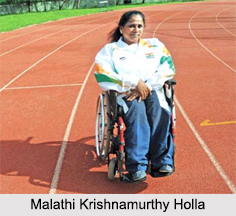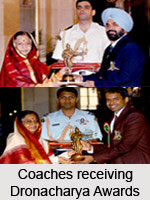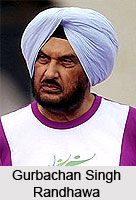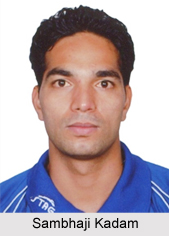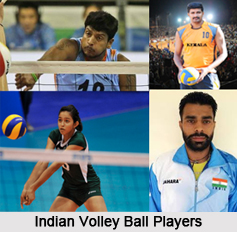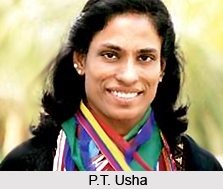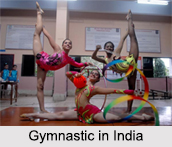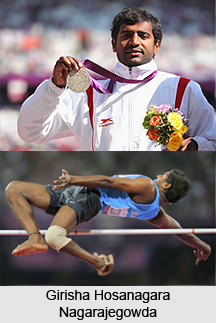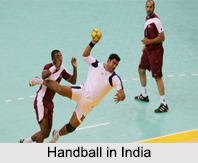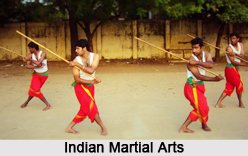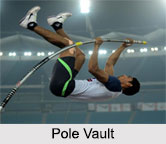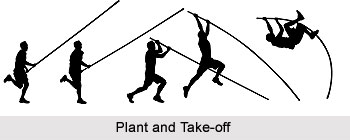 Technique in pole vault is extremely important. Use of proper technique actually helps a vaulter to clear the crossbar successfully. While in this form of the game physical agility and fitness is of utmost important, knowledge of proper technique is also very crucial. There are, in practise, many techniques that are used by the vaulters at various skill levels to clear the bar, the generally accepted technical model can be broken down into several phases, listed and described below.
Technique in pole vault is extremely important. Use of proper technique actually helps a vaulter to clear the crossbar successfully. While in this form of the game physical agility and fitness is of utmost important, knowledge of proper technique is also very crucial. There are, in practise, many techniques that are used by the vaulters at various skill levels to clear the bar, the generally accepted technical model can be broken down into several phases, listed and described below.
The Approach
The approach of the pole vaulter is of great importance and during the process the athlete sprints down the runway in manner as to achieve correct position and maximum speed to initiate take off at the end of approach. Top notch pole vaulters use approaches with 18 to 22 strides. At the initial part of the approach the pole is generally carried upright to some degree and slowly lowered as the vaulters get close to the landing pit. This is the way athlete lessens the levered weight of the pole. The faster the athlete can run, better is his chance for the take off. It is a common point for all vaulters to slowly increase the speed throughout the approach, reaching maximum speed at take-off. Vaulters increase stride frequency while keeping the knees up like sprinter. Much unlike the short sprint events- 100 m where, the athlete runs with a much upright torso position right throughout the approach to counter balance the effect of carrying the pole.
The Plant and Take-off
Plant and take off, kick-started by classic three steps out from the final step. Vaulters mainly count their steps backwards from initial point to the box only counting the steps taken on the left foot (vice-versa for left-handers) except for the second step from the box, which is taken by the right foot.
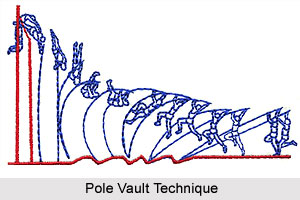
The main aim of this phase is to correctly translate kinetic energy accumulated from approach into potential energy stored by the elasticity of the pole, and to gain as much initial vertical height as possible by jumping off the ground. This process starts with vaulter raising his arms up from around the hips or mid-torso until they are fully outstretched above his head, with the right arm extended directly above the head and the left arm extended perpendicular to the pole (vice-versa for left-handed vaulters).
The Swing Up
This process consists of vaulter swinging his trail leg forward and rowing the pole, bringing his top arm down to the hips, while trying to keep the trail leg straight to store more potential energy into the pole, the rowing motion also keeps the pole bent for a longer period of time for the vaulter to get into optimum position. Once in a "U" shape the left arm hugs the pole tight to efficiently use the recoil within the pole. The goal is to carry out these motions as thoroughly and as quickly as possible; it is a race against the unbending of the pole. Effectively, this causes a double pendulum motion, with the top of the pole moving forward and pivoting from the box, while the vaulter acts as a second pendulum pivoting from the right hand.
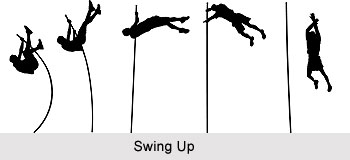
The Extension
This refers to the extension of the hips upward with the outstretched legs as the shoulders drive down causing the vaulters to be positioned upside down. This position is known as the inversion. During the execution of this phase, the pole begins to recoil, propelling the vaulters quickly upward. The hands of the vaulter remain close to his body as they move from the shins back to the region around the hips and upper torso.
The Turn
The turn is immediately executed after or even during the end of the rockback. As per the name signifies, the vaulters turn 180 degree toward the pole while extending the arms down past the shoulder and head. Characteristically the vaulter will begin to angle his body toward the bar as the turn is carried forward, although preferably the vaulter will remain as straight as possible.
The Fly-Away
This is very often emphasized by novice vaulters and spectators. But it happens to be the easiest form of the vault, and a result of perfect execution of previous phases. This main generally consists of vaulter pushing off the pole and then releasing it so it falls away from the bar and mats. As the athlete goes over the then around the bar, the athlete is facing the bar. There is a natural rotation of the body over the bar. And the main concern of the vaulter is to make sure that his/her face, arms and any other appendages do not knock the bar off as he/she goes over. The vaulter should land near the middle of the foam landing mats, or pits, face up.





